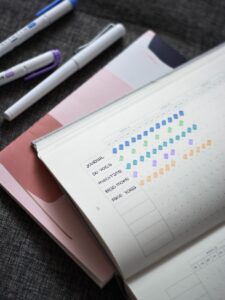Promoting Organization Through Daily Checklists

As teachers strive for a calm and organized classroom conducive to learning, implementing practical strategies is essential.
One effective approach is the use of daily checklists to keep both students and teachers on track throughout the day. Reflecting on my experience teaching 4th-graders, I remember vividly how a handful of students kept the classroom engaged but often left our environment feeling tangled and messy. I found myself directing much of my attention towards supporting those in need, often at the expense of overlooking the organization and structure that could have benefited the entire class. Looking back, I realize that implementing a checklist could have been a game-changer for fostering a more organized and efficient learning environment for all my students and not just the handful in which it worked well.
Now, let’s delve into how checklists can revolutionize classroom management and learning experiences.
Example Strategy: Daily Student Checklists
Step-by-Step Instructions:
Create Checklist Templates:
Design simple checklist templates that outline daily tasks and expectations for students. Include sections for assignments, materials needed, and important reminders.
Morning Routine:
Distribute the checklists to students at the beginning of each day and review the tasks together as a class. Encourage students to prioritize their tasks and plan their day accordingly. Another option is to put a checklist on the board for students to utilize. This would allow them to insert work that is tailored to their specific needs.
Independent Work Time:
During independent work periods, students can refer to their checklists to stay organized and focused. Encourage them to check off completed tasks and monitor their progress throughout the day.
End-of-Day Reflection:
At the end of the day, have students review their checklists and reflect on their accomplishments. Celebrate their successes and discuss any challenges they encountered, encouraging problem-solving and self-reflection.
By incorporating daily checklists into our classroom routines, we empower students to take ownership of their learning and stay organized throughout the day. Let’s embrace the power of checklists to promote a calm and structured learning environment for our students!






Leave a Reply